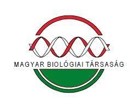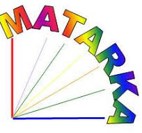Hogyan befolyásolja a beporzók ritkulása a mezőgazdasági hozamokat a világban és Magyarországon?
Absztrakt
Az elmúlt két évtized egyre gyakrabban emlegetett problémája a beporzók egyedszámának és sokféleségének csökkenése. Míg e jelenség tényét illetően igen nagy az egyetértés a szakirodalomban, a csökkenés mezőgazdaságra gyakorolt hatásának mértéke vitatott. Vagyis nem tudjuk pontosan, mennyire függ a világ mezőgazdasága a beporzástól, mint ökoszisztéma szolgáltatástól. Cikkünkben áttekintjük azokat a kutatási eredményeket, amelyek a beporzók megritkulásának a mezőgazdaságra gyakorolt hatásáról szólnak. Ezek alapján mind globálisan, mind pedig Magyarország esetében megállapíthatjuk, hogy noha az élelmiszer-össztermelés szempontjából legfontosabb haszonnövényeinket nem állatok porozzák be, sok, a kiegyensúlyozott és egészséges táplálkozáshoz fontos termény esetében nélkülözhetetlenek, de legalábbis terméscsökkenéshez vagy minőségromláshoz vezet a hiányuk.
Hivatkozások
Aizen, M. A., Garibaldi, L. A., Cunningham, S. A. & Klein, A. M. (2009): How much does agriculture depend on pollinators? Lessons from long-term trends in crop production. – Annals of Botany 103: 1579–1588.
Aizen, M. A. & Harder, L. D. (2009): The global stock of domesticated honey bees is growing slower than agricultural demand for pollination. – Current Biology 19: 1–4.
Allen-Wardell, G., Bernhardt, P., Bitner, R., Burquez, A., Buchmann, S., Cane, J., Cox, P. A., Dalton, V., Feinsinger, P., Ingram, M., Inouye, D., Jones, C. E., Kennedy, K., Kevan, P., Koopowitz, H., Medellin, R., Medellin-Morales, S., Nabhan, G. P., Pavlik, B., Tepedino, V., Torchio, P. & Walker, S. (1998): The potential consequences of pollinator declines on the conservation of biodiversity and stability of food crop yields. – Conservation. Biology 12: 8–17.
Bauer, D. M. & Wing, I. S. (2010): Economic Consequences of Pollinator Declines: A Synthesis. – Agricultural and Resource Economics Review 93: 368–383.
Díaz, S., Tilman, D. & Fargione, J. (2005): Biological Regulation of Ecosystem Services. – In: Millennium Ecosystem Assessment – Ecosystems and Human Well-being: Current State and Trends, Vol. 1. World Resources Institute, Washington DC, USA, pp. 297–329.
Eilers, E. J., Kremen, C., Greenleaf, S. S., Garber, A-K. & Klein, A. M. (2011): Contribution of pollinator-mediated crops to nutrients in the human food supply. – PloS ONE 6(6): e21363. doi:10.1371/journal.pone.0021363.
van Engelsdorp, D., Haynes, J. Jr., Underwood, R. M. & Pettis, J. (2008): A survey of honey bee colony losses in the U. S., fall 2007 to spring 2008. – PloS ONE 3: e4071. doi: 10.1371/journal.pone.0004071
FAOSTAT (2010). ProdSTAT Database. – Food and Agriculture Organization of the United Nations. Available at http://faostat.fao.org/site/567/default.aspx#ancor Version updated: Sept 02, 2010.
Garibaldi, L. A., Aizen, M. A., Cunningham, S. A. & Klein, A. M. (2009): Pollinator shortage and global crop yield. Looking at the whole spectrum of pollinator dependency. – Communitive & Integrative Biology 2(1): 37–39.
Garibaldi, L. A. et al. (2011): Stability of pollination services decreases with isolation from natural areas despite honey bee visits. – Ecology Letters 14: 1062–1072.
Garibaldi, L. A. et al. (2013): Wild pollinators enhance fruit set of crops regardless of honey bee abundance. – Science 339: 1608–1611.
Ghazoul, J. (2005a): Buzziness as usual? Questioning the global pollination crisis. – Trends in Ecology and Evolution 20: 367–371.
Ghazoul, J. (2005b): Response to Steffan-Dewenter et al.: Questioning the global pollination crisis. – Trends in Ecology and Evolution 20: 652–653.
Ghazoul, J. & Koh, L. P. (2010): Food security not (yet) threatened by declining pollination. – Frontiers in Ecology and the Environment 8: 9–10.
Gill, R. J., Ramos-Rodriguez, O. & Raine, N. E. (2012): Combined pesticide exposure severely affects individual- and colony-level traits in bees. – Nature 491: 105–108.
Goulson, D., Nicholls, E., Botías, C. & Rotheray, E. L. (2015): Bee declines driven by combined stress from parasites, pesticides, and lack of flower. Science 347: 1435– 1444.
Heard, M. S., Carvell, C., Carreck, N. L., Rothery, P., Osborne, J. L. & Bourke, A. F. G. (2007): Landscape context not path size determines bumble-bee density on flower mixtures sown for agri-environmental schemes. – Biology Letters 3: 638–641.
Hegland, S. J., Nielsen, A., Lázaro, A., Bjerknes, A. L. & Totland, Ø. (2009): How does climate warming affect plant-pollinator interactions? – Ecology Letters 12: 184–195.
Holzschuh, A., Steffan-Dewenter, I., Kleijn, D. & Tscharntke, T. (2007): Diversity of flower-visiting bees in cereal fields: effects of farming system, landscape composition and regional context. – Journal of Applied Ecology 44: 41–49.
Kearns, C. A., Inouye, D. W. & Waser, N. M. (1998): Endangered mutualism: the conservation of plant-pollinator interactions. – Annual Review of Ecology, Evolution and Systematics 29: 83–112.
Klein, A. M., Vaissiére, B. E., Cane, J. H., Steffan-Dewenter, I., Cunningham, S. A., Kremen, C. & Tscharntke, T. (2007): Importance of pollinators in changing landscapes for world crops. – Proceedings of the Royal Society B 274: 303–313.
Kluser, S. & Peduzzi, P. (2007): Global Pollinator Decline: A Literature Review. – UNEP/GRID-Europe. UNEP, Geneva, Switzerland, 2007.
Kovács-Hostyánszki, A., Batáry, P. & Báldi, A. (2011): Local and landscape effects on bee communities of Hungarian winter cereal fields. – Agricultural and Forest Entomology 13: 59–66.
Kremen, C. & Ricketts, T. (2000): Global perspectives on pollination disruption. – Conservation Biology 14: 1226–1228.
Kremen, C., Williams, N. M. & Thorp R. W. (2002): Crop pollination from native bees at risk from agricultural intensification. – Proceedings of the National Academy of Sciences of the United States of America 99: 16812–16816.
Kremen, C., Williams, N. M., Aizen, M. A., Gemmill-Herren, B., LeBuhn, G., Minckley, R., Packer, L., Potts, S. G., Roulston, T., Steffan-Dewenter, I., Vázquez, D. P., Winfree, R., Adams, L., Crone, E. E., Greenleaf, S. S., Keitt, T. H., Klein, A. M., Regetz, J. & Ricketts, T. H. (2007): Pollination and other ecosystem services produced by mobile organisms: a conceptual framework for the effects of land-use change. – Ecology Letters 10: 299–314.
Matson, P. A., Parton, W. J., Power, A. G. & Swift, M. J. (1997): Agricultural intensification and ecosystem properties. – Science 277: 504–509.
Memmott, J., Craze, P. G., Waser, N. M. & Price, M. V. (2007): Global warming and the disruption of plant-pollinator interactions. – Ecology Letters 10: 710–717.
Millennium Ecosystem Assessment (2005): Ecosystems and Human Well-being: Biodiversity Synthesis. – World Resources Institute, Washington DC, USA.
Nabhan, G. P. & Buchmann, S. L. (1997): Services provided by pollinators. – In: Daily, G. C. (eds.): Nature’s Services; Societal Dependence on Natural Ecosystems. Island Press, Convelo, CA, USA, ISBN 1-55963-476-6, pp. 133–150.
Paini, D. R. (2004): Impact of the introduced honey bee (Apis mellifera) (Hymenoptera: Apidae) on native bees: A review. – Austral Ecology 29: 399–407
Potts, S. G., Biesmeijer, J. C., Kremen, J. C., Neumann, P., Schweiger, O. & Kunin, W. E. (2010): Global pollinator declines: trends, impacts and drivers. – Trends in Ecology and Evology 25: 345–353.
Richards, A. J. (2001): Does low biodiversity resulting from modern agricultural practice affect crop pollination and yield? – Annals of Botany 88: 165–172.
Sárospataki, M., Novák, J. & Molnár, V. (2004): Hazai poszméhfajok (Bombus spp.) veszélyeztetettsége és védelmük szükségessége. – Természetvédelmi Közlemények 11: 481–489.
Sárospataki, M., Novák, J. & Molnár, V. (2005): Assessing the threatened status of bumble bee species (Hymenoptera: Apidea) in Hungary, Central Europe. – Biodiversity and Conservation 14: 2437–2446.
Spira, T. P. (2001): Plant-pollinator interactions: a threatened mutualism with implications for the ecology and management of rare plants. – Natural Areas Journal 21: 78–88.
Steffan-Dewenter, I., Potts, S. G. & Packer, L. (2005): Pollinator diversity and crop pollination services are at risk. – Trends in Ecology and Evolution 20: 651–652.
Tanács, L., Benedek, P. & Móczár, L. (2009): Changes in lucerne pollinating wild bee assemblages in Hungary from the pre-pesticide era to 2007. – Beitr. Ent. 59(2): 335–353.
Tanács, L. & Benedek, P. (2010): Changing diversity of lucerne pollinating wild bee populations and synbiological evaluation in the last six decades in Hungary. – Lucrari Stiintifice-Seria I-Management Agricol 12: 161–168.
Tang Y., Xie J. S. & Chen K. M. (2003): Hand pollination of pears and its implications for biodiversity conservation and environmental protection – A case study from Hanyuan County, Sichuan Province, China. Report submitted to the International Center for Integrated Mountain Development. Moziqiao: Sichuan University.
Tylianakis, J. M. (2013): The global plight of pollinators. – Science 339: 1532.
Westerkamp, C. & Gottsberger, G. (2000): Diversity pays in crop pollination. – Crop Science 40: 1209–1222.
Westerkamp, C. & Gottsberger, G. (2002): The costly crop pollination crisis. – In: Kevan P., Imperatriz Fonseca, V. L. (eds.): Pollinating Bees – The Conservation Link Between Agriculture and Nature, Ministry of Environment, Rio de Janeiro, Brasilia, pp. 51–56.
Winfree, R. (2008): Pollinator-dependent crops: an increasingly risky business. – Current Biology 18: 968–969.
Winfree, R., Aguilar, R., Vázquez, D. P., LeBuhn, G. & Aizen, M. A. (2009): A meta-analysis of bees’ responses to anthropogenic disturbance. – Ecology 90: 2068–2076.






